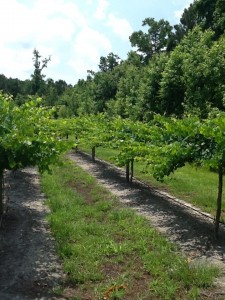It’s funny, I almost didn’t apply to become a Kenan Fellow. Sure, it was a great opportunity and an honor, but I wasn’t sure that I wanted to commit myself to something that would take me away from my kids during OUR time. I always consider Summer Break a special time to spend with my children because at my husband’s work Summer is far from his time off; instead it is a time when he works a minimum of 6 days a week with many hours spent making sure green season runs as smoothly as possible. This means summer has become a time of snuggles, beach trips, and museum adventures just my kids and me. I wasn’t sure I was willing to give that up. Not only did I not want to give up my time at home with my kids, the fellowship options were very limited for Social Studies teachers and the one I wanted most wasn’t available to me. I really considered waiting until another year and iIt was only because of peer pressure that I decided to go ahead and apply. Since I had waited until almost the last minute to decide I had to hurry to complete my essays, chase down recommendations, and struggle to get my application submitted. During all of this, I still found myself worrying and wondering if I was doing the right thing.
Then came an email from Craig…The “What a Grape Opportunity” fellowship was open to me after all! I have always felt that the best things in life happen unexpectedly and this is just more proof. This fellowship excited me because there are so many aspects that fall into my curriculum area.
- The MotherVine. Probably the thing that excites me the most about the connection between my fellowship and my classroom is a grapevine. This is not just any grapevine though…this is the oldest cultivated grapevine in America and it dates back to earliest American History. It has been written about in historical records and it probably provided nourishment to the settlers at Roanoke before they disappeared. It also provides a heck of a story during tastings when customers see a poster of the original vine as they drink a Duplin wine made from its cuttings grown right here in Duplin County. This vine shows a valuable link between the Old World and the New and I think it will excite students the same way it excites customers. The Vine also can be used in modern history as an example of environmental impact. In 2010 it was almost destroyed by the carelessness of a power company worker when he sprayed it with weed killer. The LA Times article on this will make an excellent reading for my class and maybe even spawn discussion on environment vs. business.
- Prohibition and Government Regulation. Since day one of my fellowship I have known that I was going to be linking wine and laws into my lessons. It is an obvious connection to US History since Temperance/Prohibition comes up often in the curriculum. What I didn’t realize was that I would also take the laws into another lesson as well—one on interstate trade. One thing that students in US History often struggle with is understanding why many groups in history have asked the Federal government to step in and regulate trade between states. In my time at the Winery I have seen firsthand why that is. It amazes me how much each state varies in sales tax, amounts allowed, and registration requirements. I honestly don’t know how anyone can keep up with all the details. No wonder small businesses have always demanded help.
- Agricultural technology. Duplin Winery is very proud of its heritage and one of the things you will immediately notice when you arrive for a visit is the historical atmosphere. Located around the Retail area are old bottles, pictures that show the winery’s beginnings, and agricultural equipment that shows how the process began. Tour guides describe the process and even as you stare at shiny stainless steel vats and automatic bottling equipment you hear how the Fussells started out bottling and labeling by hand after actually stomping the grapes. The Winery even celebrates this heritage every September by holding what they call the “Grape Stomp.” People from all over come to compete and see who can crush the most juice out of the grapes. This will make a great addition to my lessons as I discuss how technology affects farmers over time and use examples they can relate to here in our community.
The great thing about my fellowship is the curriculum connections don’t end there. I can’t wait to see what else I learn in my last few weeks here at Duplin Winery. I don’t know about everyone else, but I am going to be sad to leave!

I am so jealous of your internship and I really cannot wait to hear all about it! I am a social studies teacher, so I really enjoyed all of the relevant historical relations!
Lauren, just let me know when and I’ll be glad to tell you what I’ve learned. If you get anywhere near the winery stop on by and i’ll show you around.
Mendy,
You may want to talk to Whit Jones at Cottle Farms. He is a former Ag. Extension Agent and is president of the NC Muscadine Growers Association. He can help with the agriscience part of your project.
BTW – Did you get my message about Contra Dancing with Anne – too much fun!
It was fate! Thank you for taking the plunge.